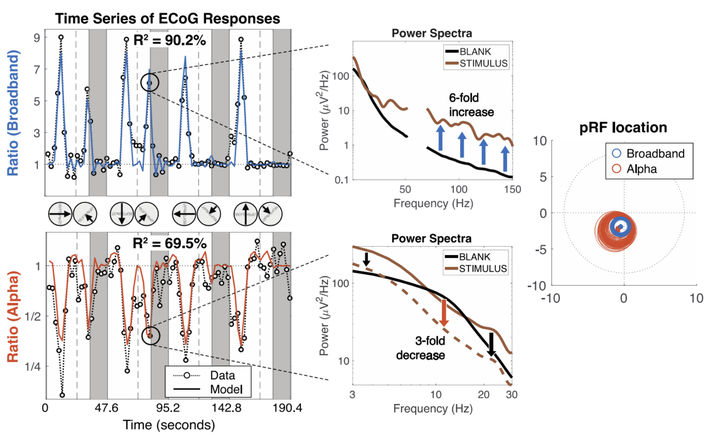Precise Spatial Tuning of Visually Driven Alpha Oscillations in Human Visual Cortex

Abstract
Neuronal oscillations at about 10 Hz, called alpha oscillations, are often thought to arise from synchronous activity across occipital cortex, reflecting general cognitive states such as arousal and alertness. However, there is also evidence that modulation of alpha oscillations in visual cortex can be spatially specific. Here, we used intracranial electrodes in human patients to measure alpha oscillations in response to visual stimuli whose location varied systematically across the visual field. We separated the alpha oscillatory power from broadband power changes. The variation in alpha oscillatory power with stimulus position was then fit by a population receptive field (pRF) model. We find that the alpha pRFs have similar center locations to pRFs estimated from broadband power (70–180 Hz), but are several times larger. The results demonstrate that alpha suppression in human visual cortex can be precisely tuned. Finally, we show how the pattern of alpha responses can explain several features of exogenous visual attention.